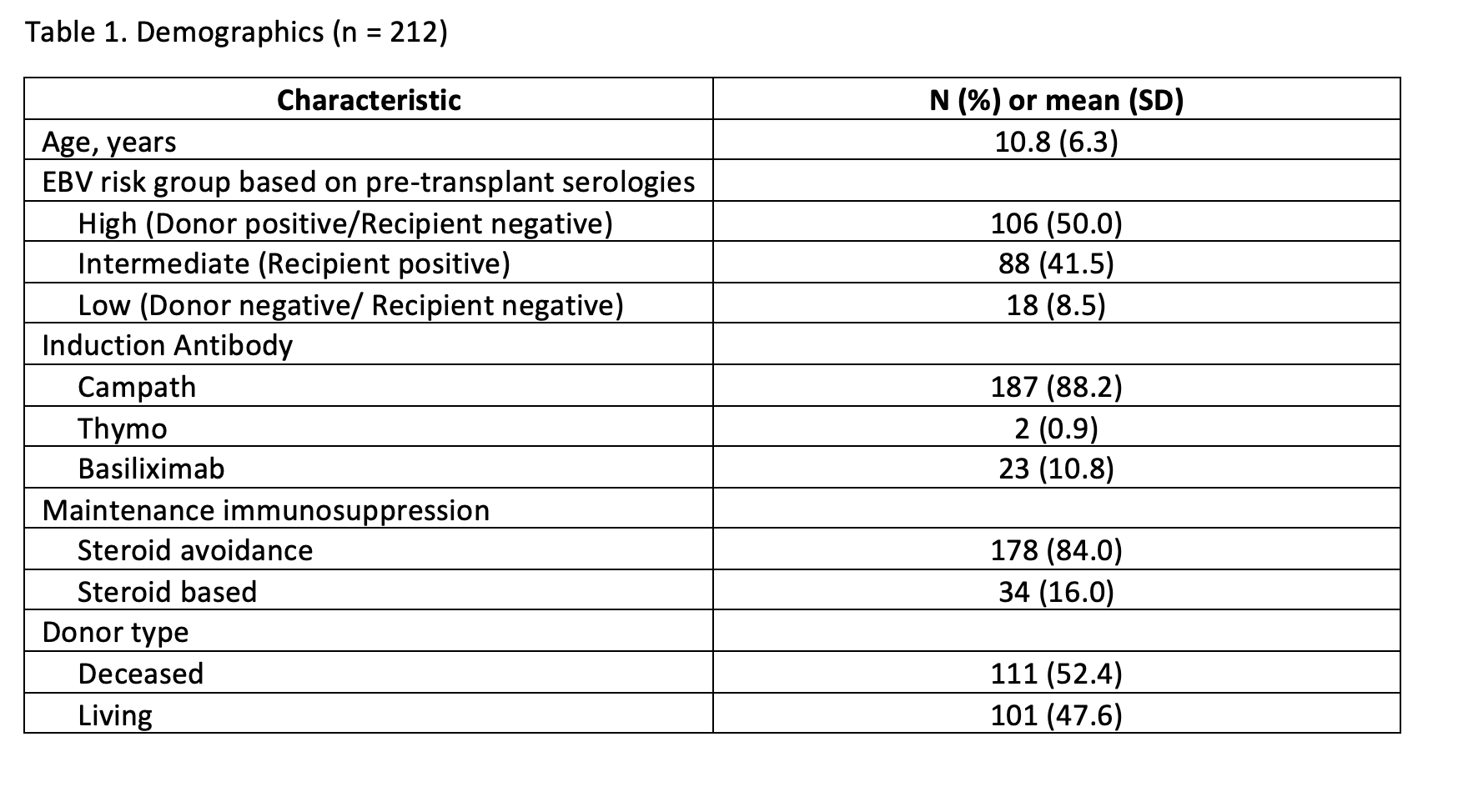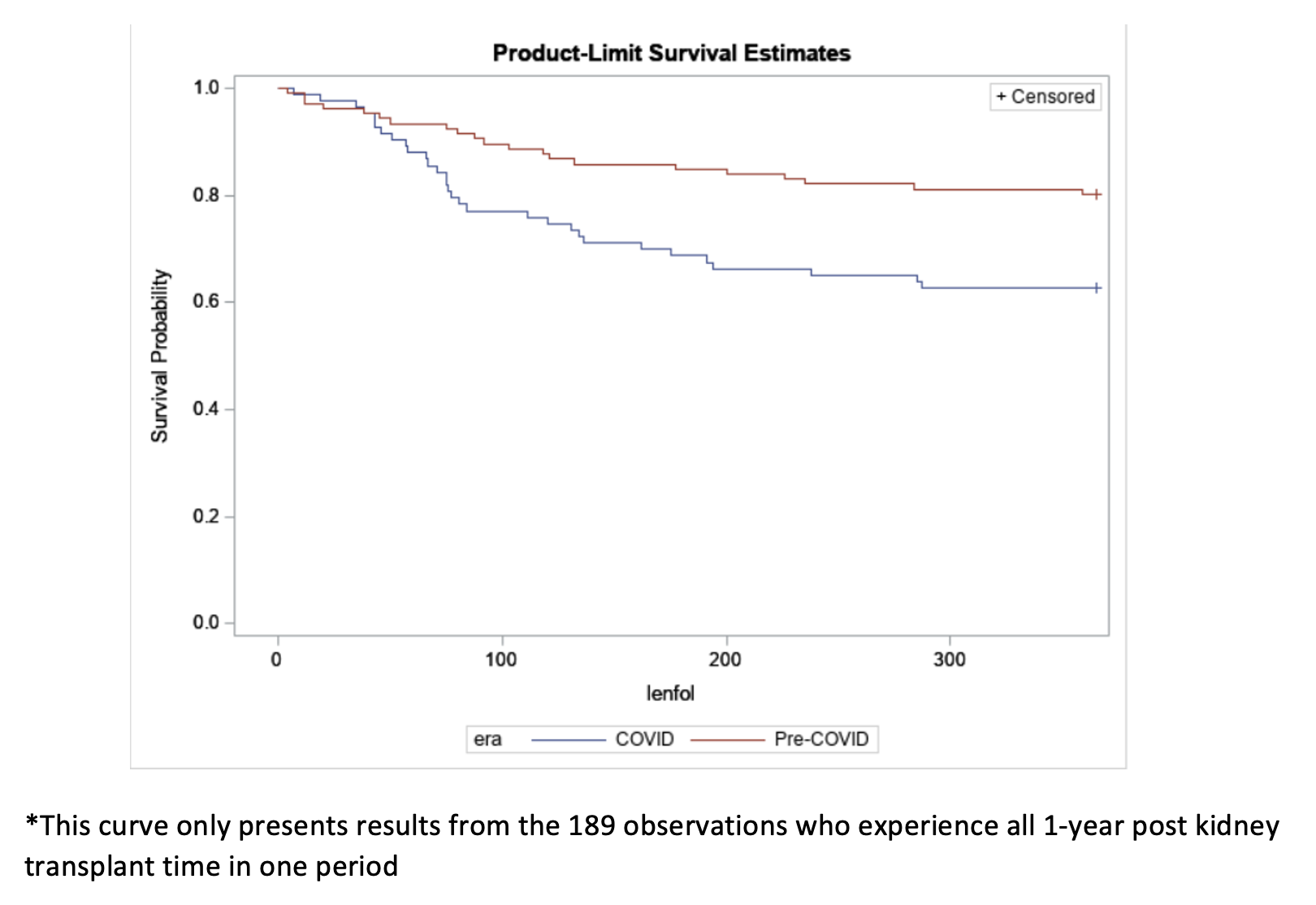Transplant coordinator/Nurse Practitioner
Kidney Transplant
Boston Childrens Hospital
Incidence of EBV DNAemia among pediatric kidney transplant recipients in the COVID era
JoAnn Morey1, Isa Ashoor1, Gabrielle D'Ambrosi2, Michael Somers1.
1Pediatrics, Boston Children's Hospital , Boston, MA, United States; 2Biostatistics and Research Design Center, Boston Children's Hospital, Boston, MA, United States
Introduction: Recent observations suggest a compounding effect of COVID-19 on the incidence of other viral infections including Epstein Barr Virus (EBV). We examined EBV DNAemia incidence in pediatric kidney transplant recipients and its association to the COVID pandemic.
Methods: All kidney transplant recipients transplanted at a single pediatric center from 2015-2023 with at least 1 year of follow-up were included. EBV DNAemia was defined as a positive EBV DNA PCR test anytime in the first year post transplant. Baseline demographics and outcomes of interest (EBV DNA PCR result in first year and occurrence of PTLD as of last known follow-up) were collected. Exposure of interest was whether the time after kidney transplant was in the COVID era, defined as on or after March 1, 2020, or the pre-COVID era, defined as before March 1, 2020. COVID era was modeled as a time varying exposure that varied each day after the patient’s kidney transplant in relation to March 1, 2020. We fit a cox proportional hazards regression model to examine the association between EBV DNAemia within the first year post kidney transplant and COVID era.
Results: 212 kidney transplant recipients were included.

Mean age was 10.8 years; 52% received deceased donation; and 91.5% were either intermediate or high risk for EBV reactivation. The majority received depletional induction therapy (89%) and steroid avoidance maintenance immunosuppression (84%). There were no differences in clinical characteristics across the COVID eras. Among all patients, 27% developed EBV DNAemia in the first year post transplant. In patients who experience time in their one-year post transplant in the COVID era, the rate of EBV DNAemia was 1.88 times (95% CI 1.12 to 3.17) the rate of EBV DNAemia among those who did not experience time in the COVID era during their one-year post transplant.

The incidence of PTLD at last follow-up in COVID era participants was similar to that of pre-COVID era patients who had longer cumulative exposure to immunosuppression at last follow-up (6% vs. 6.6%).
Conclusion: In this large cohort of pediatric kidney transplant recipients, we observed an increased risk of EBV DNAemia in the first year post kidney transplant for every day spent in the COVID era relative to pre pandemic era. Further exploration of the impact of documented COVID-19 infection and/or vaccination on EBV DNAemia incidence within the COVID era may offer additional avenues to mitigating EBV DNAemia risk through COVID-19 directed prevention and treatment strategies.
References:
[1] COVID
[2] EBV DNAemia
[3] Kidney transplant
[4] PTLD
Lectures by JoAnn M Morey
| When | Session | Talk Title | Room |
|---|---|---|---|
|
Sat-20 10:00 - 11:00 |
Infections and vaccines | Incidence of EBV DNAemia among pediatric kidney transplant recipients in the COVID era | MOA 5 |
|
Thu-18 17:00 - 18:00 |
Kidney Posters - from P1.1 to P1.32 | Long term outcomes of sirolimus based immunosuppression among haplotyped-matched pediatric living donor kidney transplant recipients | MOA 10 (Exhibit Area) |
|
Thu-18 17:00 - 18:00 |
Kidney Posters - from P1.1 to P1.32 | Financial burden of kidney transplantation | MOA 10 (Exhibit Area) |
